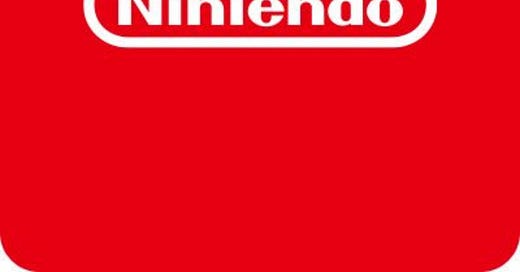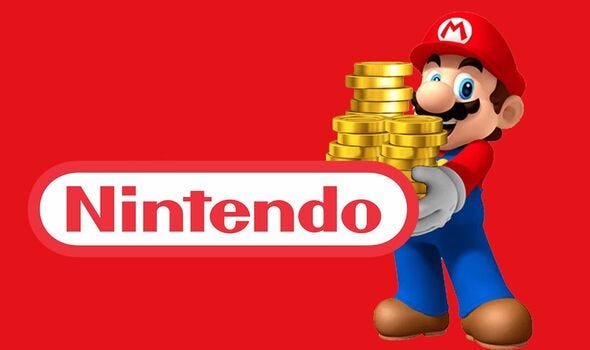Our original Nintendo report was one of our very first, sent out when we had just 4 subscribers. Since then, we've grown to nearly 350, so many of you may have missed it. As Nintendo is our second-largest position, we wanted to make sure it's back on your radar. We’ve also added more detail and incorporated recent updates to give you a clearer picture. We hope you find it useful.
Nintendo’s video game business includes some of the most successful franchises in the world, which have remained popular over decades. These include Mario, Pokémon, The Legend of Zelda, Animal Crossing, Kirby, and Splatoon. Its revenue is split as follows:
Dedicated Video Game Platform: This category is the largest, accounting for approximately 94% of Nintendo's total revenue. It includes hardware, software (such as downloadable versions of packaged software, download-only software, add-on content, and Nintendo Switch Online), and accessories.
Hardware: Currently makes up 43.6% of the revenue. The Nintendo Switch family currently includes the Nintendo Switch, Nintendo Switch OLED Model, and Nintendo Switch Lite.
Software: Software sales are higher margin than hardware and make up the remaining of the dedicated video game platforms revenue. Digital sales now make up 50.2% of Nintendo's software sales, showing an increase of 2% year-over-year. This upward trend in digital sales is highly beneficial for Nintendo due to the higher margins whilst still offering significant opportunities for growth. In addition, over the last year a substantial 81.2% of Nintendo's total software sales come from first-party titles, underscoring their success in developing games that resonate strongly with their fanbase. This dominance in first-party software also suggests ample potential for expanding third-party software sales in the future. (Note, this exceptionally high percentage is may slightly unrepresentative because the Switch is late in its cycle with third party developers currently not creating new games for it). Nintendo does not provide specific details on the exact margins, but based on industry norms, it is estimated that first-party games usually command gross profit margins of around 70-80%, largely because Nintendo controls nearly all aspects of these games. For third-party titles, Nintendo typically earns between 10-30% in royalties, depending on the agreement with the developer. Physical game cards bring down the gross margin to about 50-60% for first-party titles and likely lower for third-party games, while digital sales offer significantly higher gross margins, estimated at 85-90% for first-party titles, due to the absence of physical production and distribution costs.
Switch online: There are currently roughly 123 million annual active switch players, with over 38 million paying for Switch Online. This represents a large proportion of the player base that is committed to the console to the extent that they want to pay a monthly subscription to play online.
App Store Platform: The combination of a large active user base, a digital distribution channel, third-party support, and a monthly subscription business shows that the Switch is a leading “App Store Platform” for core console gaming.
Mobile, IP related income: This includes income from visual content, smart-device content, and royalties, currently making up roughly 5.5% of revenue. This segment has nearly doubled in size over the last year, thanks in part to the Mario Movie, with theme park additions and further movies to come in the future.
Other (Playing cards, etc): This smaller segment, around 0.6% of revenue, includes playing cards and related items.
As of the end of FY24, 44.3% of revenue comes from the Americas, 24.3% from Europe, 21.7% from Japan and the remaining 9.7% from the rest of the world. This totals 78.3% of revenue generated outside of Japan.
Sales Per Hardware Unit
As of 2019, Nintendo President Shuntaro Furukawa acknowledged that the rise of digital sales, including indie titles and add-on content, has complicated the conventional calculation of tie-rates. He suggested a new metric, "sales per hardware unit," which better reflects the overall sales performance of the platform, considering all forms of digital and physical content. As digital sales have grown, the Switch has seen a significant increase in sales per hardware unit, rising from approximately ¥41,700 in its first fiscal year to ¥98,524 by the end of FY2024. This represents a compound annual growth rate (CAGR) of approximately 13.07%, reflecting the increasing value generated per console over time.
In saying this, as of June 30, 2024, the tie-rate for the Nintendo Switch stands at approximately 8.83 software units per hardware unit. This reflects strong engagement with the platform’s broad software library.
Comparatively, the tie-rates for previous Nintendo consoles were:
Nintendo GameCube: ~9.6 software units per hardware unit
Nintendo Wii: ~8.4 software units per hardware unit
Nintendo DS: ~6.5 software units per hardware unit
Nintendo 3DS: ~4.3 software units per hardware unit
Nintendo Wii U: ~7.4 software units per hardware unit
This shift in focus from traditional tie-rates to maximising total revenue per hardware unit highlights the evolving digital ecosystem on the Switch platform, distinguishing it from previous Nintendo consoles that relied more heavily on physical game sales.
Proprietary Brands (Franchises):
Mario (Super Mario, Mario Kart, Super Mario Bros, Donkey Kong, Super Smash Bros, Wario), Animal Crossing, Kirby, Pokemon, Splatoon, Legend of Zelda, Pikmin, Wii.
Moat:
Nintendo has an impressive moat, and one that we believe will only expand in the coming years. The list of proprietary brands mentioned above are extremely well known across the world and have long lasting fanbases thanks to a plethora of evergreen content.
Nintendo's player demographic, with 70% being over the age of 18 and an approximately equal male/female ratio, demonstrates the brand's enduring appeal across various age groups. This older demographic, distinct from the typical gaming community, presents a unique opportunity for Nintendo to tap into a market with potentially greater spending power. Moreover, the Nintendo Switch's design as a highly personal and social device naturally lends itself to being owned in multiples within a single household. This aspect not only broadens the potential market but also reinforces the console's role in fostering social connections and shared experiences, further solidifying the brand's appeal and market position.
Unlike its competitors, Nintendo prioritises the quality of gameplay over performance. However, the anticipated launch of the Switch 2 promises enhancements in performance, which could attract a broader audience, particularly those who value higher-end graphics. This improvement is especially significant if the Switch 2 gains the capability to support more AAA games, potentially broadening Nintendo's appeal player base.
Nintendo has also started to focus on its extremely valuable but underutilized IP recently, with the release of the Mario Movie, plans to release a sequel in 2026, a Zelda movie, and the opening of two theme parks in the coming years. These initiatives will excellently introduce the Nintendo world to a younger audience, hopefully creating lifelong connections to the brand. In 2023, Zelda was partly blamed for UK inflation issues by the ONS, so if that is not a strong sign of brand presence and loyalty, we don’t know what is.
To conclude, Nintendo has an extremely strong moat, and one that will only get better over time if management can utilise its IP, carry on making great content and improve its technology.
Financials and Rough Valuation:
Nintendo has very good gross profit margins at 57% and net margins at 29%. The company has close to 0 debt. Current cash is $3.35 a share, making up around 25% of the market cap. Currently Nintendo offers a decent dividend yield of 2.7% and shares outstanding have been falling, albeit only slightly, for the last 5 years. ROE and ROIC has been excellent sitting at around an average of 20%. Overall, we believe Nintendo is one of the healthiest companies out there.
Below are our back-of-the-napkin intrinsic value estimates based on a 10% discount rate and a 5-year timeframe.
Bull: 12% EPS Growth Rate, 20 PE - $21 Per Share
Base: 8% EPS Growth Rate, 18 PE - $15.5 Per Share
Bear: 4% EPS Growth Rate, 16 PE - $11.5 Per Share
The Thesis:
Firstly, the release of the new Switch 2 should not only boost hardware sales but also expand the user base with an increase in AAA game availability. This larger player base will, in turn, lead to a larger Nintendo Switch Online subscriber base, bringing in more high gross margin income. By adopting Apple's strategy of incremental upgrades, Nintendo can boost revenue from high-margin digital sales, reducing its cyclicality.
With the launch of the new console, we can anticipate major new titles, driving a significant increase in software sales. The trend towards digital sales is expected to persist, further contributing to a higher percentage of digital sales in total software revenue, which is advantageous for Nintendo as digital sales typically offer better margins. Currently, software sales account for about 55% of Nintendo's total revenue, and we foresee this proportion growing, leading to improved gross and net profit margins over time. However, it's important to consider that a substantial part of this growth may come from third-party software sales, which typically have lower margins compared to Nintendo's first-party sales. Therefore, the overall impact on gross margins will largely depend on the mix of first party versus third-party software sales.
We also believe that Nintendo will leverage its internationally recognised and massively popular IPs in ways that acquire new users who are not already Nintendo Switch users, such as through mobile games (with over 800 million downloads), merchandising (e.g., LEGO Super Mario series and physical retail stores), theme parks (Super Nintendo World in Japan and the United States), and visual content (e.g., the upcoming Super Mario Bros. 2 Movie, Zelda, etc). These initiatives should act as a user acquisition flywheel, with value accruing both within Nintendo’s core video games and its App Store Platform business.
Additionally, recent developments with the Tokyo Stock Exchange (TSE) have led to stricter regulations on companies' capital allocation, urging them to enhance capital efficiency and improve shareholder returns. Despite the traditionally slow pace of change in Japanese business culture, Nintendo is well-positioned to use its substantial cash reserves to deliver on this when the time arises. About 28% of its cash for strategic initiatives, such as expanding its development teams, strengthening customer engagement through Nintendo Accounts, and furthering the development of value-added digital services. This will be achieved through continued share buybacks and dividend payments. The introduction of stock-based compensation (SBC) for employees will also help align the company's interests with value creation, ensuring a focus on long-term growth and profitability.
Overall, the combination of a new Switch, the creation of a transmedia flywheel, the production of excellent games, and continued efforts to maximise shareholder value presents an asymmetric opportunity with significant upside potential for Nintendo over the next few years.
Risks:
Switch 2 flops and Nintendo fails to grow revenues, remaining a cyclical stock, highly reliant on hardware sales.
Currency exchange risks.
Risks associated with the Japanese economy (however, over 75% of revenue comes from abroad).
Significant drop-off in sales ahead of the Switch 2 launch as gamers wait for the next gen (temporary, happening now).
Completely fails to leverage IP to grow the brand; films are a huge failure.
No further development in improved capital allocation.
Disclaimer: The content provided in this newsletter is for informational purposes only and does not constitute financial, investment, or other professional advice. The opinions expressed here are those of the author and do not necessarily reflect the views of Schwar Capital. Investing involves risk, including the possible loss of principal. Past performance is not indicative of future results. The author may or may not hold positions in the stocks or other financial instruments mentioned. Always do your own research or consult with a qualified financial advisor before making any investment decisions.




